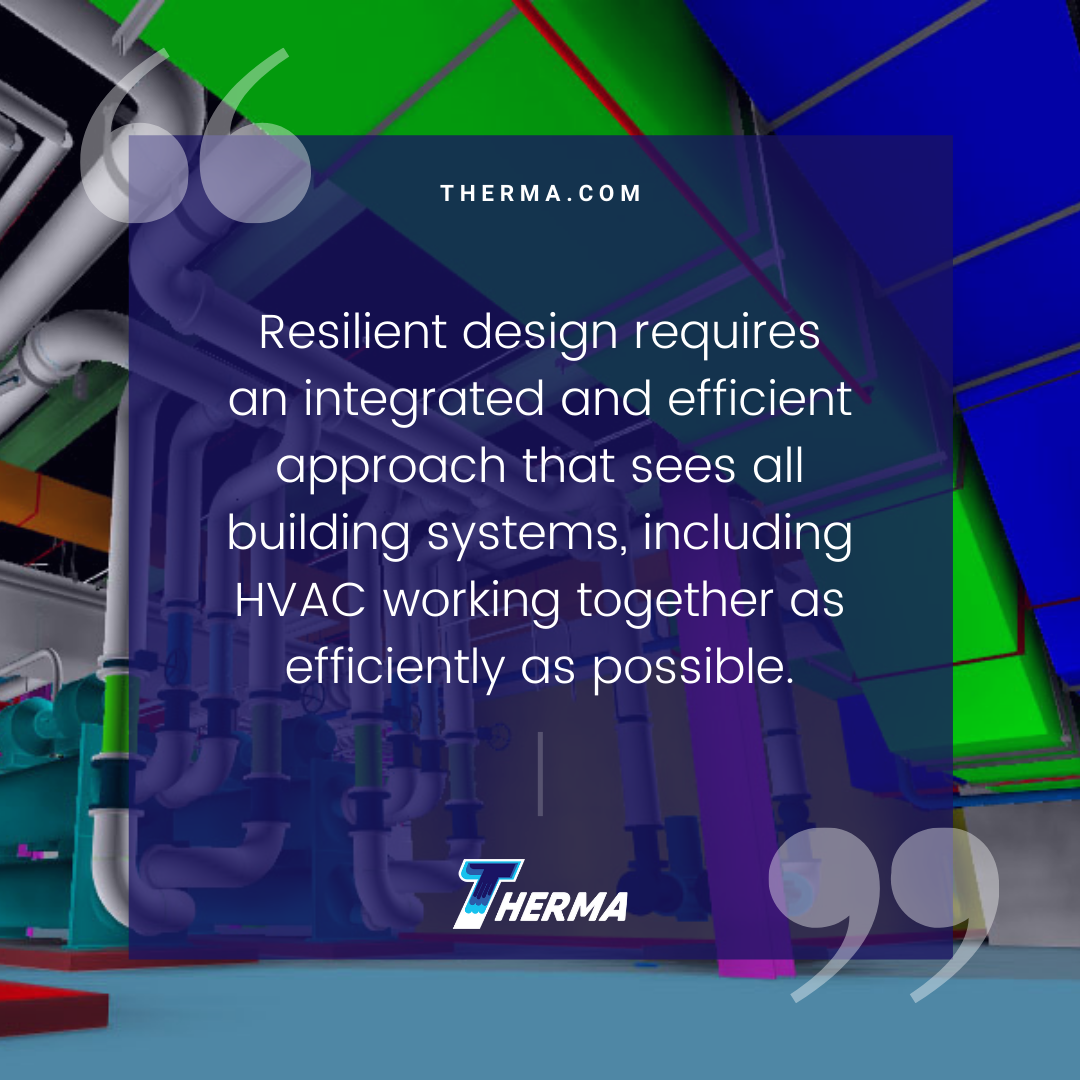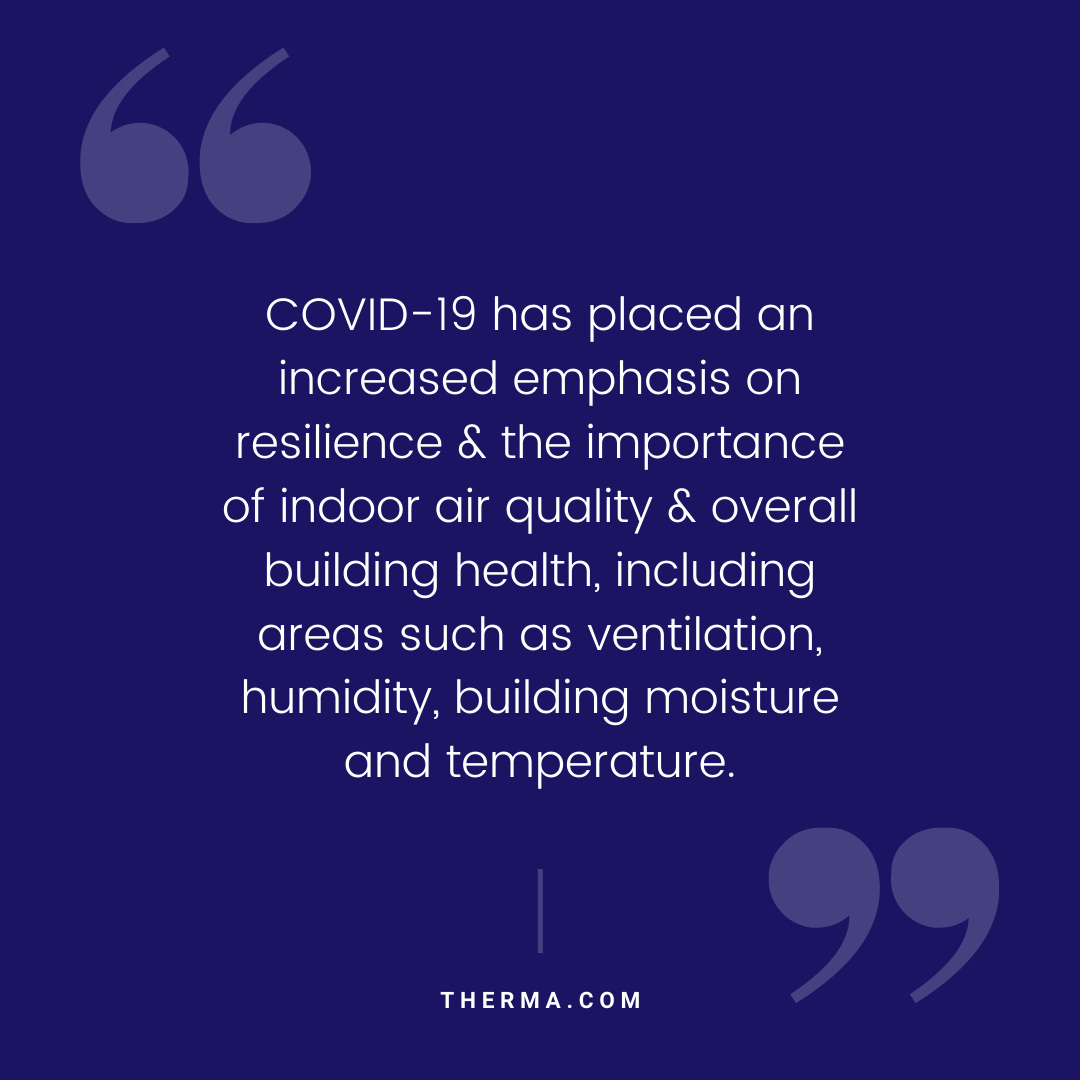When states encountered their first involvement with a lockdown this past spring, building owners faced new guidelines concentrating on social distancing and holding traditional indoor events outside. With winter fast approaching, we may be on the precipice of finding out just how resilient we really are as the Covid 19 pandemic hits its second wave of new infections. This week marks more than 10 million cases of Covid 19 in the US alone, and globally the pandemic is soaring past 51 million cases with little sign of stopping.
With the lack of a vaccine coupled with an increased need for people to be inside more during the upcoming winter months, many building owners are turning toward building design considerations as a way to mitigate the potential risk prolonged indoor exposure might carry. Indoor environments now require added resiliency toward community-spread and airborne particulate matter, including viruses.
What is Resilient Design?
Resilience references our ability to adjust or become accustomed to changing circumstances and maintain a certain functionality level during a crisis. It’s our ability to bounce back after an unplanned interruption.
Resilient design fundamentals outline several structural and landscape elements essential for resiliency, including
- Essential human needs (e.g., water, sanitation, lighting, air quality etc.) are best served in resilient systems.
- Anything that improves durability also increases resilience.
- Resilience is scalable
- Resilience thrives in simple, passive or manual-override systems, not elaborate solutions with numerous breakable parts.
- Resilience assumes and expects disruptions.
- Resilience is not fixed or perfect-achieve what you can now and improve upon it in the future.
Resilient design requires an integrated and efficient approach that sees all building systems, including HVAC working together as efficiently as possible.
COVID 19 has placed an increased emphasis on resilience and the importance of indoor air quality and overall building health, including areas such as ventilation, humidity, building moisture and temperature.

Resilient Design in the HVAC industry
For HVAC, resiliency begins with the potential for disruptions or emergencies. The ability for systems to mitigate damage, distress, or other external threats while remaining operational contribute to its resiliency. Other elements such as reliability, occupant comfort and cost can also factor in a system’s resiliency.
Making modifications to a building incapable of supporting such changes can result in an energy consumption spike, raising associated costs. When considering ways to approach resiliency during a global pandemic, sustainability is crucial. Finding methods to maintain efficiency while limiting infection spread is crucial when tackling building design considerations.
HVAC Pressurization
Proper room pressurization is crucial to air quality, energy optimization, and occupant health and comfort. Incomplete building pressurization will result in unwanted air exchanges between indoor and outdoor air and can affect thermal loads, IAQ, occupant comfort, HVAC efficiency, and more.
Negative room pressurization has gained attention with recent reference in OSHA and CDC Covid 19/ pandemic guidelines. In addition to airborne infection isolation rooms (aiir) in hospitals, negative room pressurization can now be found in long-term or specialized care homes, dental offices, and even some retirement facilities as a way of limiting virus proliferation. The creation of a dedicated isolation room can diminish the potential for virus spread throughout an already vulnerable population, as in the case of long-term or special care residences.
Modifications to existing HVAC systems can often accommodate room pressurization needs, negating the need to replace an entire system to help supplement resiliency.
High-Efficiency Air Filters
HVAC systems typically come with high-efficiency air filters (HEPA) already installed as a way of trapping airborne particulate matter, preventing it from being sucked into your building’s air system. Because it can help capture most particles and droplets large enough to contain certain viruses, like Influenza and Covid-19, filtering can be a useful resource in areas where social distancing may not be possible or where virus transmission risks may be higher.
Relative Humidity and Covid 19
Research indicates that coronaviruses fail to thrive in environments with 40–60% relative humidity, a typical RH range for most buildings. This highlights the importance of cooling accuracy in limiting virus transmission. HVAC systems, such as evaporative cooling, can help maintain desired temperatures without contributing additional humidity to the airspace.
Resilient design considerations can help create a more efficient building while making it safer for occupants and visitors.
If you have questions about resilient design for your HVAC system during Covid 19, Therma’s qualified technicians are here to help.








